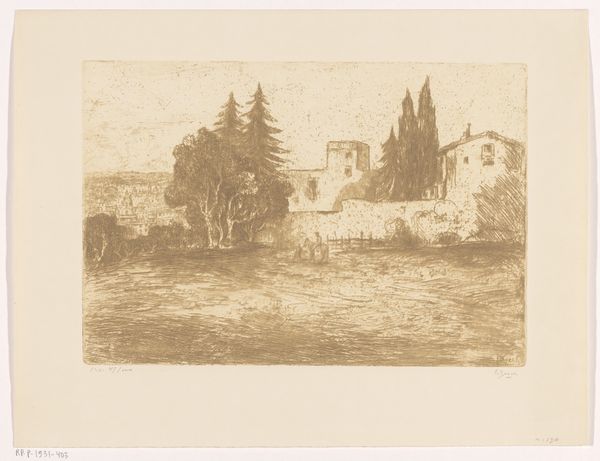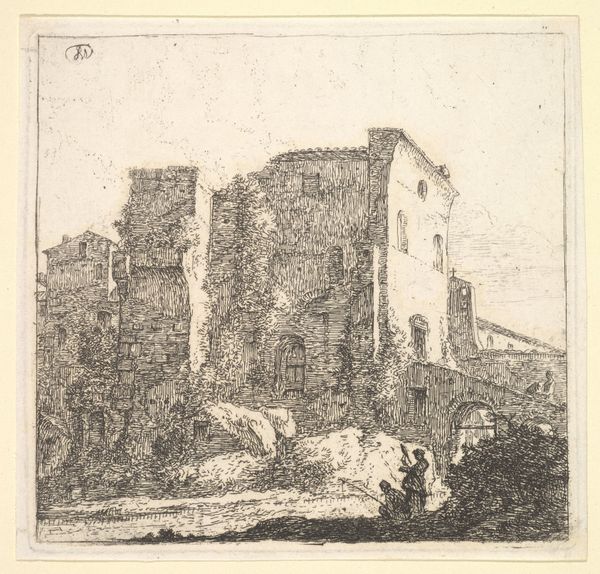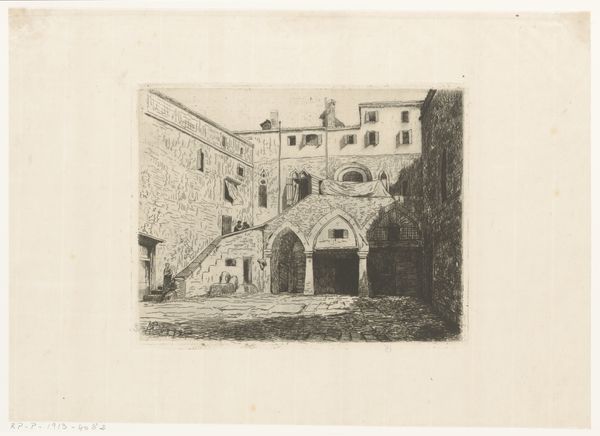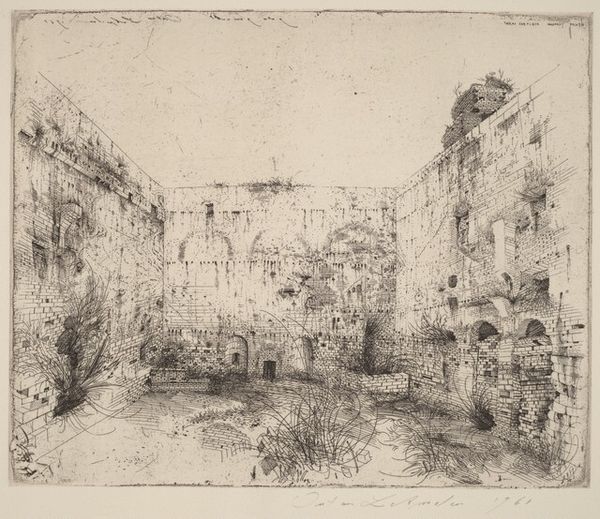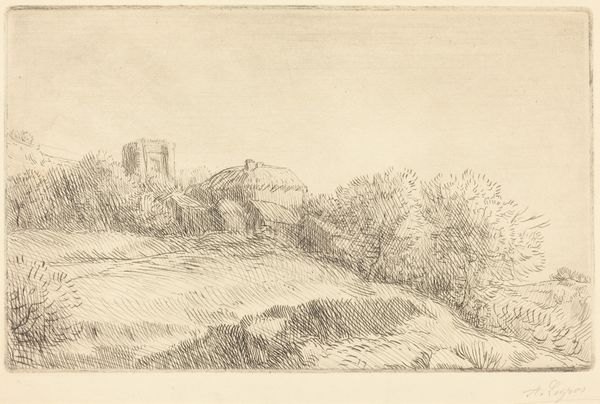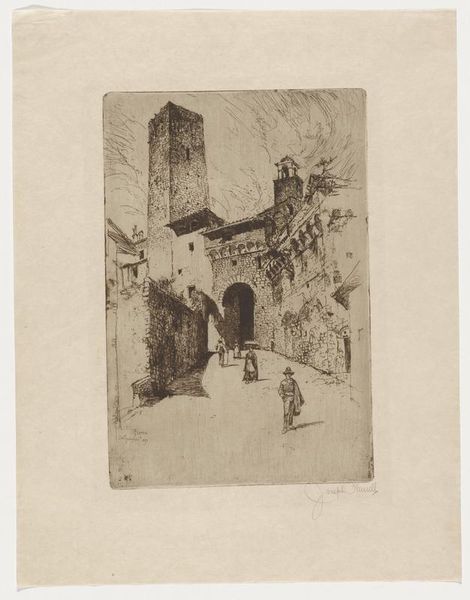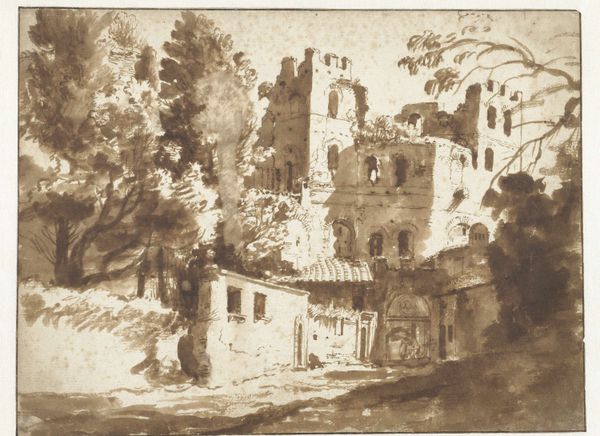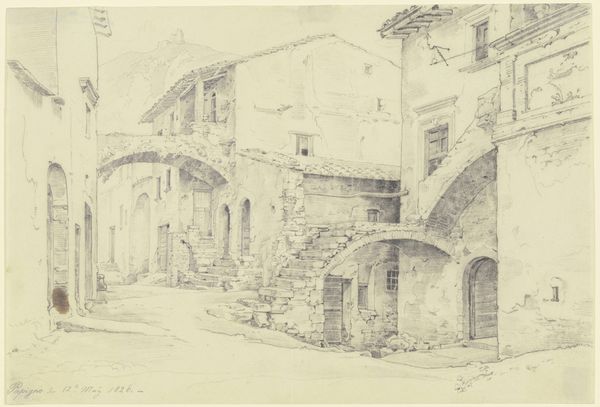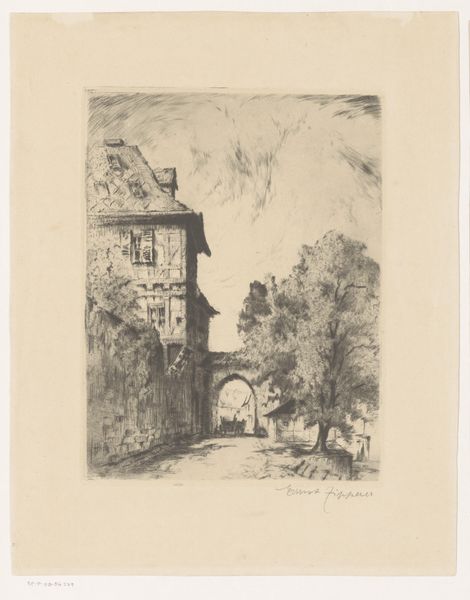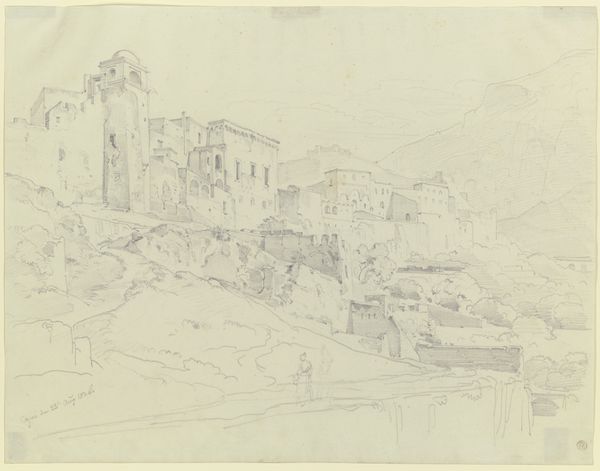
Gezicht op de ruïne van Burcht Rheinfels 1864 - 1909
0:00
0:00
Dimensions: height 300 mm, width 423 mm
Copyright: Rijks Museum: Open Domain
Curator: There’s a somber beauty to this print. Cornelia Christina Johanna van Trigt-Hoevenaar created this etching titled “Gezicht op de ruïne van Burcht Rheinfels”, which translates to “View of the ruins of Rheinfels Castle." It’s part of the Rijksmuseum's collection, and was made sometime between 1864 and 1909. Editor: Yes, somber is the word. The overwhelming feeling is of time’s relentless passage, a palpable sense of decay. The landscape seems to almost swallow the remnants of this once-mighty structure. It really evokes the aesthetic of the Romantic era. Curator: Absolutely, you see those classic Romantic themes coming through – nature’s power over human construction. Notice how the detailed foliage almost obscures the architecture itself. What do you think this symbolism suggests? Editor: Ruins became a potent symbol of both national identity and historical reflection. It offered a tangible link to the past. I wonder, was there an audience eager to consume imagery that blended picturesque beauty with reminders of former glory? The Rhine valley, in particular, had a strong symbolic role for nationalistic ideology, so a ruin becomes an opportunity to ruminate on shifting empires and histories. Curator: And within that decay, an implicit moral message. Ruins signify not just loss, but also the impermanence of earthly power. There is an emotional charge, a sort of catharsis, derived from witnessing the inevitable fading of greatness back into the natural world. Perhaps this view suggests a certain inevitability about how things turn to dust? Editor: It also served the museum-going public, who were increasingly drawn to landscapes and historic scenes. What I find interesting is the idea of landscape serving as more than mere backdrop – it's elevated to become almost an allegory. I think this piece would prompt viewers to consider what's changed, and what values remain, both in the castle and the social structure that constructed it. Curator: Indeed, seeing a structure slowly reabsorbed by nature offers us a reminder of change, death, and ultimately, transformation. It is not just an image of decay, but of continual rebirth. Editor: A potent mix of decay and symbolism makes this an impactful visual statement about cultural memory and shifting historical narratives.
Comments
No comments
Be the first to comment and join the conversation on the ultimate creative platform.

